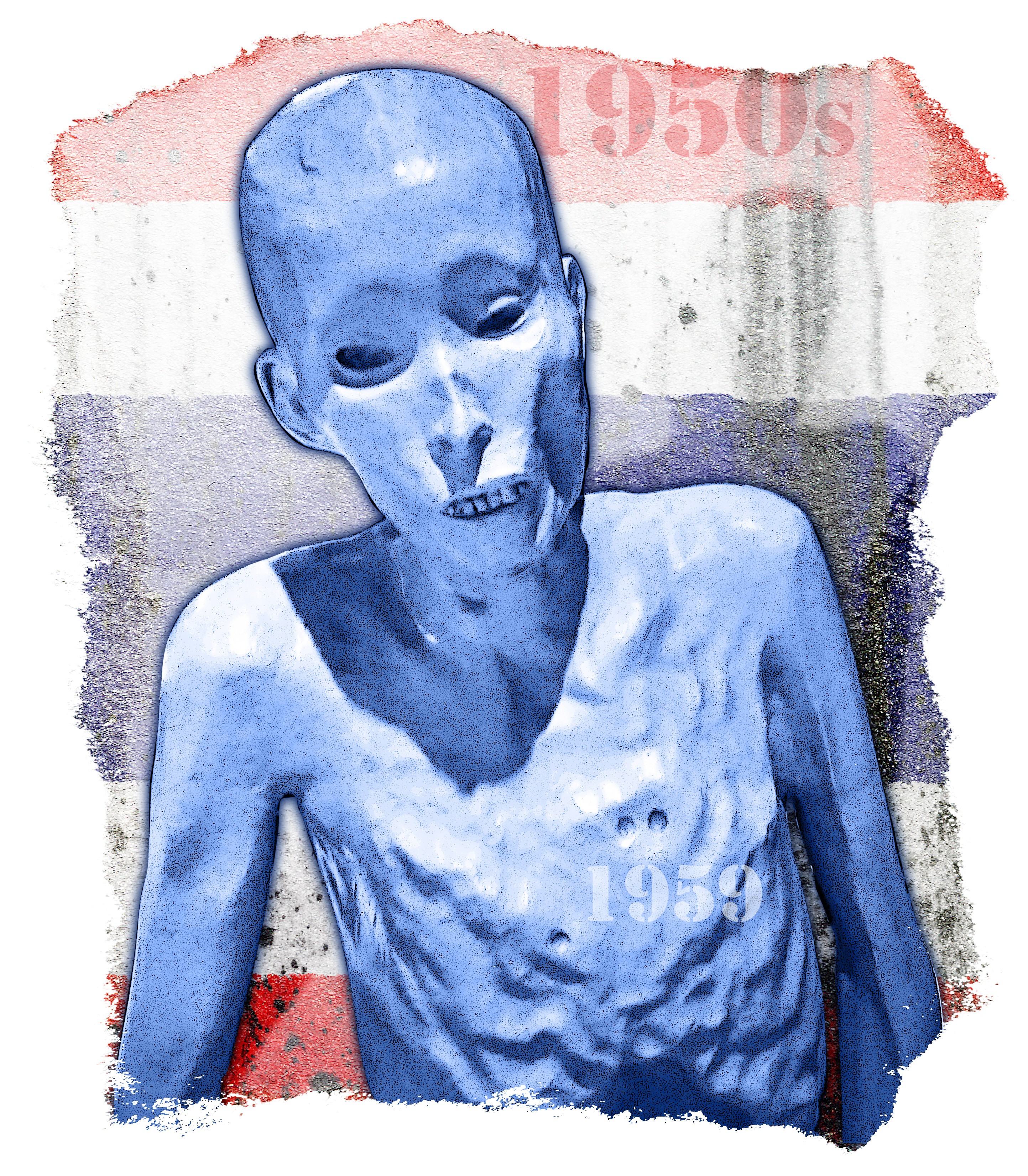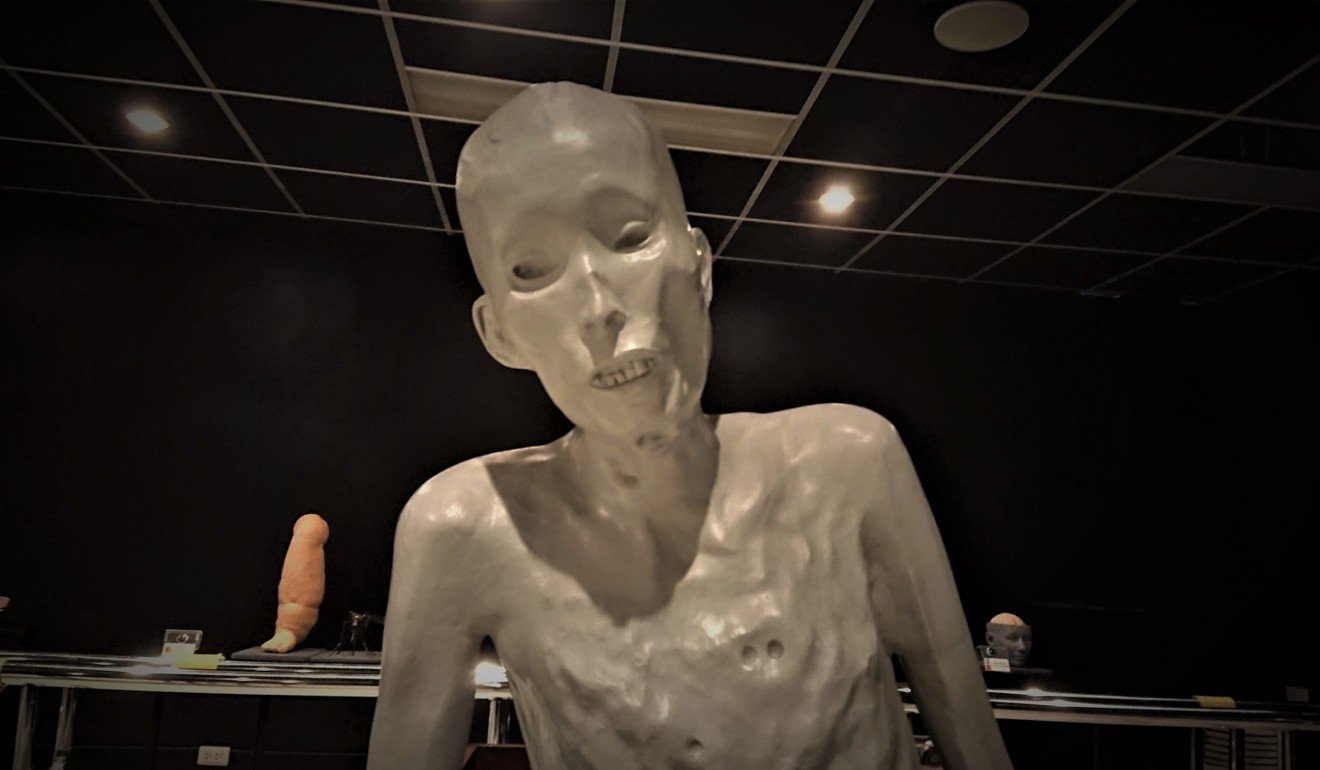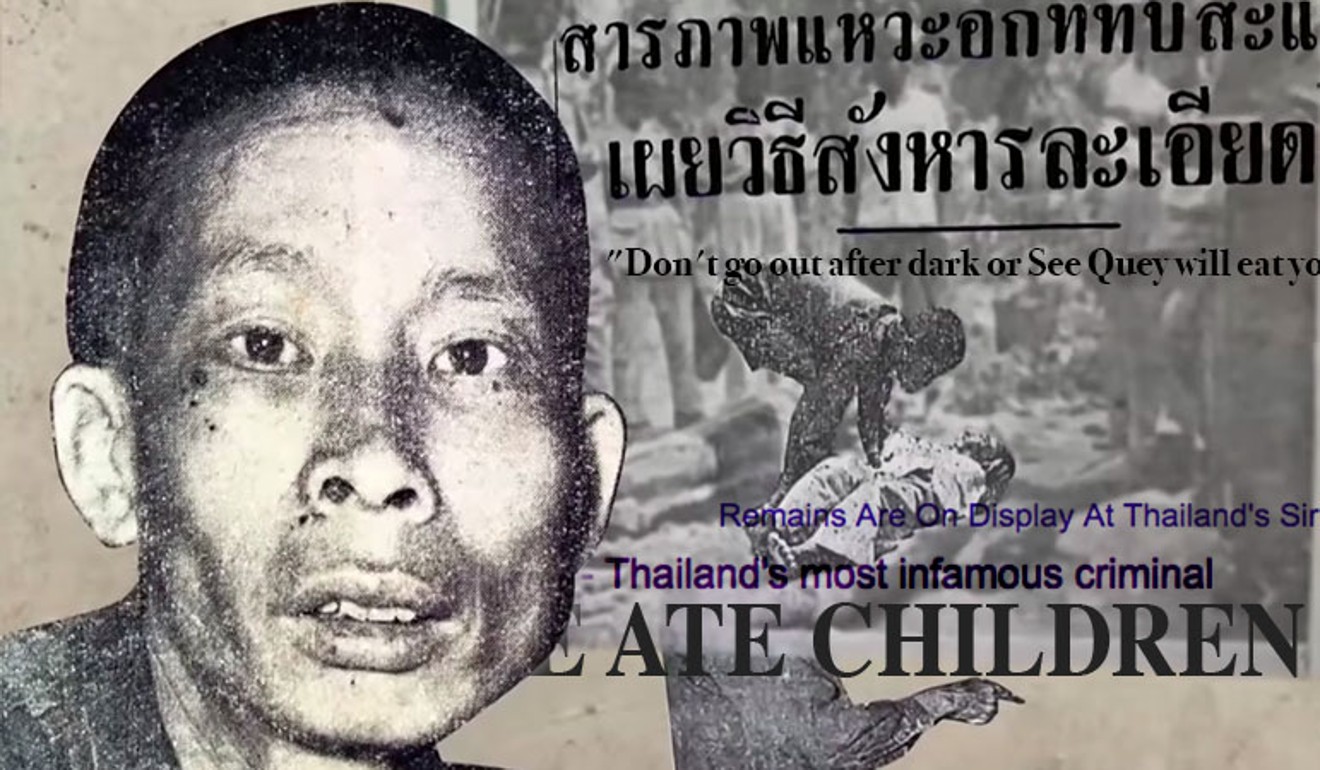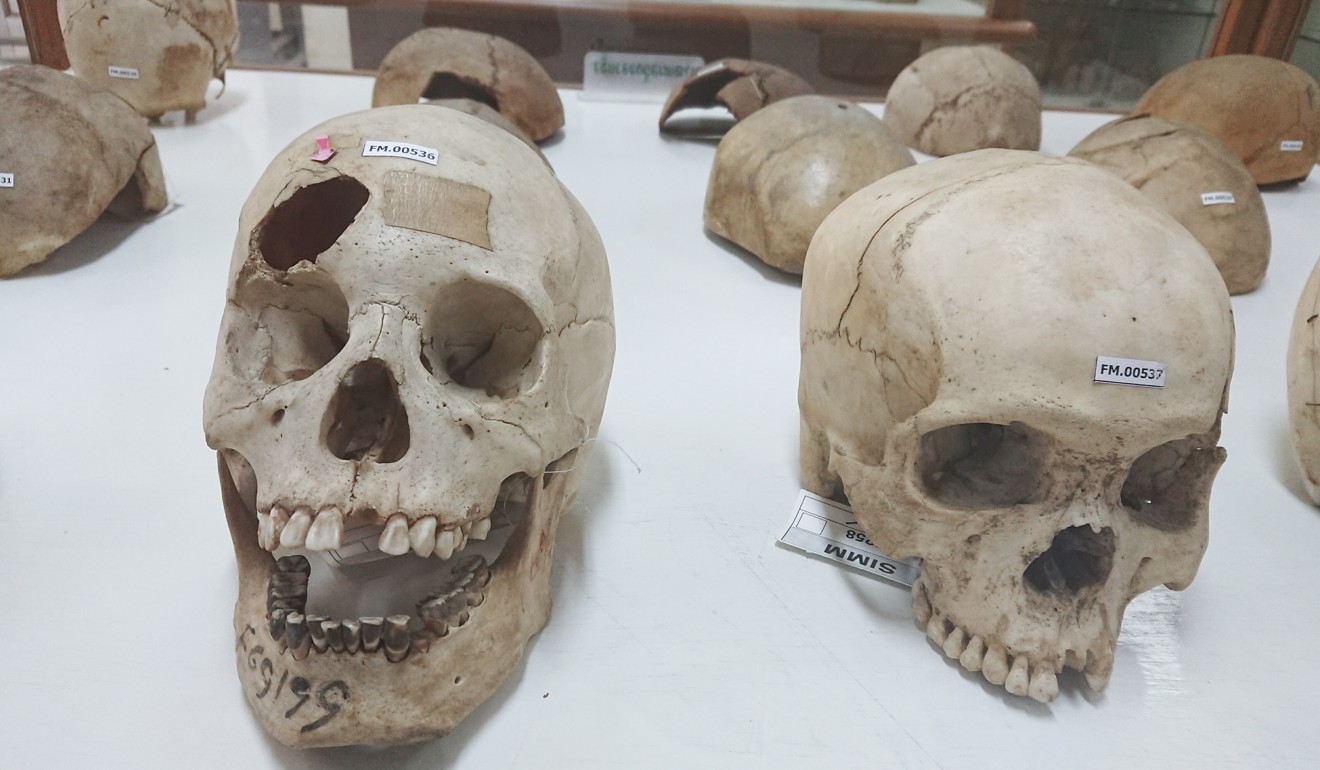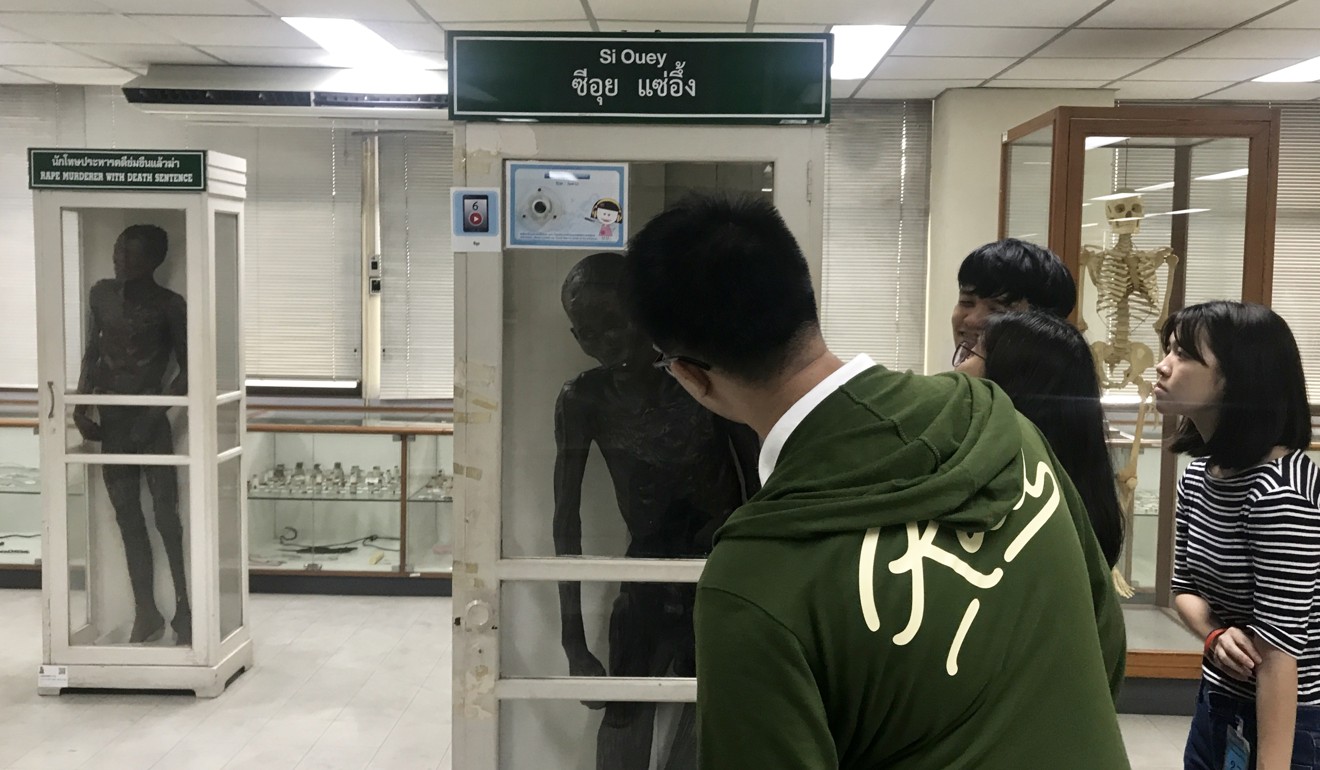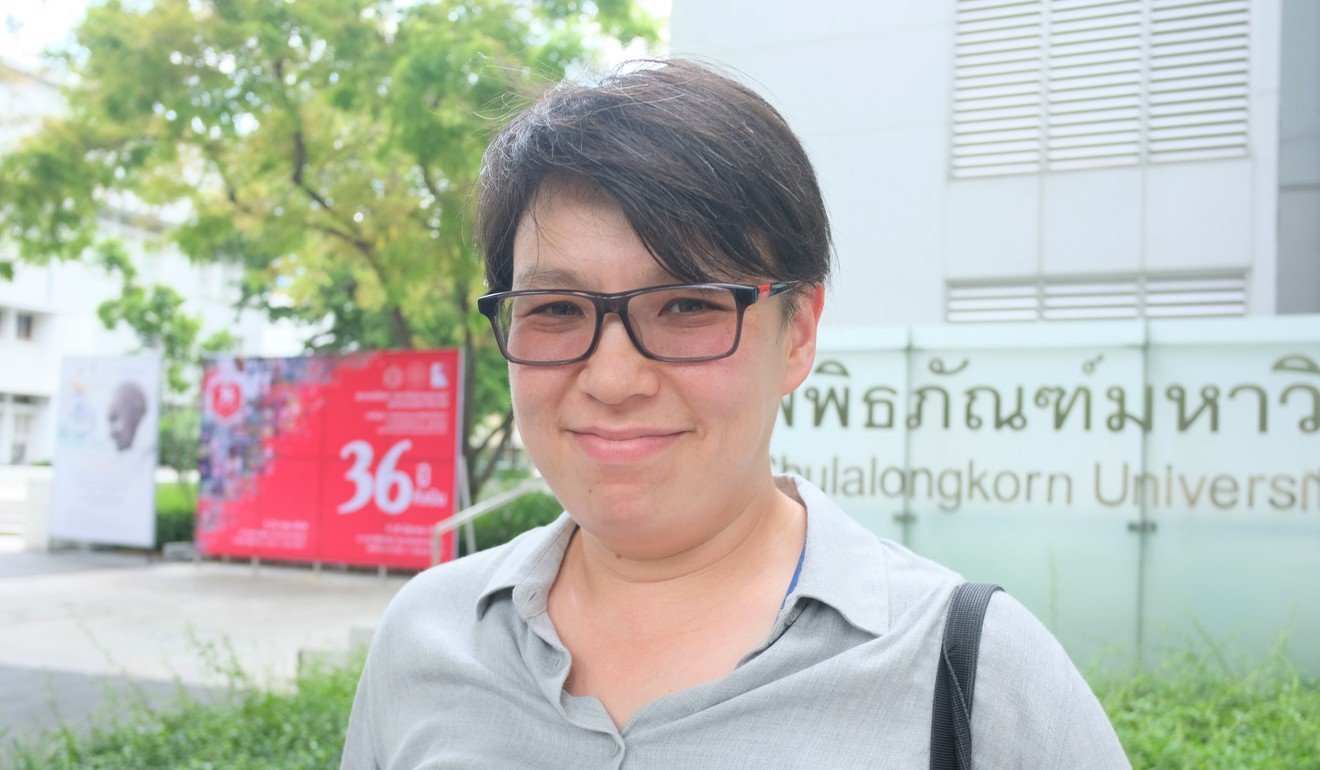- Joined
- Mar 31, 2020
- Messages
- 9,153
- Points
- 113
www.bangkokpost.com
Serial killer Si Quey cremated
published : 23 Jul 2020 at 15:25
writer: King-oua Laohong
 A rare photo of Si Quey, seen at the crematorium at Wat Bang Praek Tai in Muang district of Nonthaburi on Thursday. His coffin is at the top of the stairs, in the background. (Photo: Pattarapong Chatpattarasill)
A rare photo of Si Quey, seen at the crematorium at Wat Bang Praek Tai in Muang district of Nonthaburi on Thursday. His coffin is at the top of the stairs, in the background. (Photo: Pattarapong Chatpattarasill)
Notorious serial killer Si Quey's body was cremated in Nonthaburi on Thursday after six decades of being on public display, but the final resting place for his ashes has yet to be decided.
The cremation was at Wat Bang Praek Tai, near Bang Kwang Prison in Muang district of Bangkok.
Present were representatives of the Corrections Department and Siriraj Hospital and a group from Thap Sakae district of Prachuap Khiri Khan province, where he had found work after arriving n Thailand from China - and where he murdered four children.
Presiding over the ceremony, Corrections Department director-general Naras Savestanan said the department was responsible for the cremation of the executed convict because no relatives had came forward in response to the call by Siriraj Hospital a month ago.
Si Quey's preserved body had been kept at the hospital since his execution, and was on display in a glass case in its medical museum until August last year.
Pol Col Naras said the department had yet to decide what to do with the ashes.
"No matter how it is handled, it will be done in a way that lets the dead man's spirit rest in peace," he said.
"It is not possible to keep the ashes at Wat Thap Sakae. I am afraid that a Si Quey shrine might be set up to mislead people.
"Si Quey was an executed convict who had committed many crimes. We will handle it properly, to prevent any issues arising, and will treat Si Quey like other executed convicts who had no relatives," he said.
There were reports that some people in Thap Sakae had wanted his ashes returned there.
Siriraj Hospital had taken good care of the body and made merit for Si Quey every year. The preserved corpse had been used to teach medical students.
"His cremation marks the end of the story of Si Quey," Pol Col Naras said.
Among Thap Sakae people at the cremation was Jeerarote Jeerapornsawat, 78, who said he had known Si Quey in person when he was only a child of 10 years. Si Quey had worked in his grandfather's chilli pepper field in Thap Sakae district.
"Si Quey earned 30 baht a day. He had protruding teeth and could not speak Thai at all. So he worked as a labourer, doing jobs such as carrying water and gardening.
"I called him uncle according to Tae Chew tradition... He liked salty fried pork belly and always sought the same dish from our cook after finishing work at 5pm," said Mr Jeerarote, who now lives in Bangkok.
Si Quey was convicted of murdering seven children and also accused of removing their internal organs and boiling and eating them. He was arrested in Rayong province in 1958 and confessed to the murders, but denied the cannibalism charges.
Si Quey was executed by firing squad at Bang Kwang on Sept 16, 1959. He was 32 years old. Siriraj Hospital took the body for medical study the same month.
The bodies of four of the children he murdered, and allegedly cooked their internal organs, were found in Thap Sakae district. The other murders were committed in Bangkok, Nakhon Pathom and Rayong, where he was arrested.
Si Quey's name was often used by parents in the old days as a warning for children to behave: "If you misbehave, Si Quey will come and catch you."
Wat Bang Praek Tai, where he was cremated, is one of two temples where religious ceremonies were held for inmates executed by firing squad at the prison. It is adjacent to Zone 11 of Bang Kwang Prison.
Si Quey was incarcerated and executed at Bang Kwang Prison.
Serial killer Si Quey cremated
published : 23 Jul 2020 at 15:25
writer: King-oua Laohong

Notorious serial killer Si Quey's body was cremated in Nonthaburi on Thursday after six decades of being on public display, but the final resting place for his ashes has yet to be decided.
The cremation was at Wat Bang Praek Tai, near Bang Kwang Prison in Muang district of Bangkok.
Present were representatives of the Corrections Department and Siriraj Hospital and a group from Thap Sakae district of Prachuap Khiri Khan province, where he had found work after arriving n Thailand from China - and where he murdered four children.
Presiding over the ceremony, Corrections Department director-general Naras Savestanan said the department was responsible for the cremation of the executed convict because no relatives had came forward in response to the call by Siriraj Hospital a month ago.
Si Quey's preserved body had been kept at the hospital since his execution, and was on display in a glass case in its medical museum until August last year.
Pol Col Naras said the department had yet to decide what to do with the ashes.
"No matter how it is handled, it will be done in a way that lets the dead man's spirit rest in peace," he said.
"It is not possible to keep the ashes at Wat Thap Sakae. I am afraid that a Si Quey shrine might be set up to mislead people.
"Si Quey was an executed convict who had committed many crimes. We will handle it properly, to prevent any issues arising, and will treat Si Quey like other executed convicts who had no relatives," he said.
There were reports that some people in Thap Sakae had wanted his ashes returned there.
Siriraj Hospital had taken good care of the body and made merit for Si Quey every year. The preserved corpse had been used to teach medical students.
"His cremation marks the end of the story of Si Quey," Pol Col Naras said.
Among Thap Sakae people at the cremation was Jeerarote Jeerapornsawat, 78, who said he had known Si Quey in person when he was only a child of 10 years. Si Quey had worked in his grandfather's chilli pepper field in Thap Sakae district.
"Si Quey earned 30 baht a day. He had protruding teeth and could not speak Thai at all. So he worked as a labourer, doing jobs such as carrying water and gardening.
"I called him uncle according to Tae Chew tradition... He liked salty fried pork belly and always sought the same dish from our cook after finishing work at 5pm," said Mr Jeerarote, who now lives in Bangkok.
Si Quey was convicted of murdering seven children and also accused of removing their internal organs and boiling and eating them. He was arrested in Rayong province in 1958 and confessed to the murders, but denied the cannibalism charges.
Si Quey was executed by firing squad at Bang Kwang on Sept 16, 1959. He was 32 years old. Siriraj Hospital took the body for medical study the same month.
The bodies of four of the children he murdered, and allegedly cooked their internal organs, were found in Thap Sakae district. The other murders were committed in Bangkok, Nakhon Pathom and Rayong, where he was arrested.
Si Quey's name was often used by parents in the old days as a warning for children to behave: "If you misbehave, Si Quey will come and catch you."
Wat Bang Praek Tai, where he was cremated, is one of two temples where religious ceremonies were held for inmates executed by firing squad at the prison. It is adjacent to Zone 11 of Bang Kwang Prison.
Si Quey was incarcerated and executed at Bang Kwang Prison.



